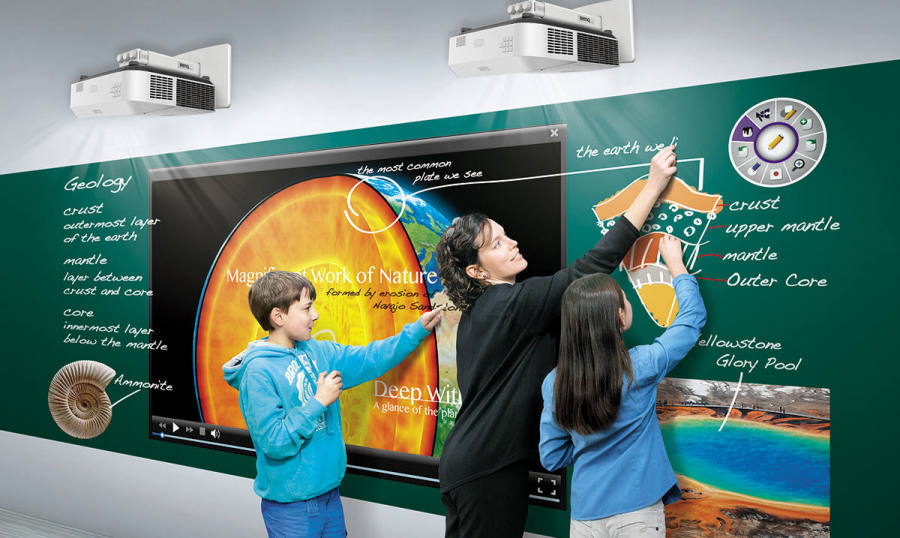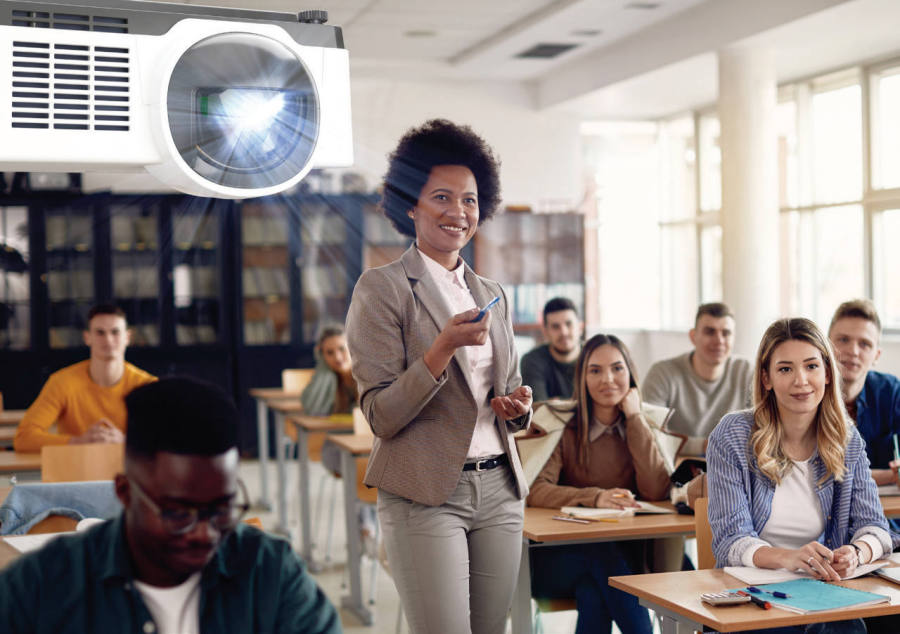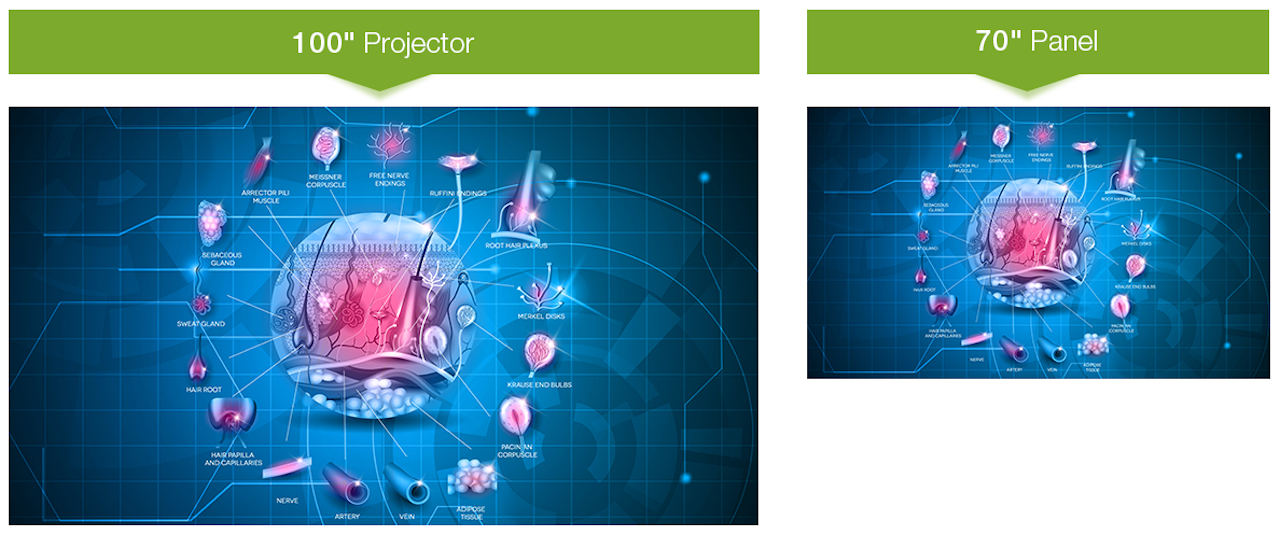Projector's for Education
Education Projector's, from Classroom to Auditorium
Playing a crucial role in education, 90% of information transmited to the brain is visual and you process visual information 60,000 times faster than text. Large clear images benefit both students and teachers. Let’s explore how they enhance the learning experience:
Efficient Note-Taking:
Education projectors allow teachers to display presentations and information digitally. At the end of the lesson, students can access these notes online, reducing the need for manual note-taking.
This ensures that everyone has the same accurate foundation to refer back to, minimizing errors or missing information.
Engagement and Interaction:
Interactive lessons encourage active participation. Up to ten students can draw on the screen simultaneously, making group projects and presentations more engaging.
Teachers can dynamically teach by:
Using Google Earth to explore cities. Revising classroom presentations in real-time using the screen freeze feature.
Researching gaps in students’ knowledge together as a group.
Even if students remain seated, projectors facilitate watching videos, taking online quizzes, and displaying real-time information.
Gamification:
Leveraging the familiarity of smartphone games, teachers can incorporate quick on-screen math puzzles or quizzes as rewards for good behavior.
Interactive projector support multi-touch, allowing multiple students to participate either around a table or at the front of the class.
Visual Learning Aids:
Display images, videos, and multimedia content, making complex concepts easier to understand.
Interactive whiteboards and educational software enhance group activities and hands-on learning.
Cost-Efficiency and Quality:
Cost-efficient, reliable with high-quality visuals. A projector can integrate seamlessly with various technologies, including recording devices for future revision.
In summary, projectors foster engagement, collaboration, and effective teaching, ultimately benefiting students in their learning journey
Choosing the right education projector.
Understanding Your Needs
Before diving into options, consider the specific requirements for your educational environment:
- Classroom Size: Assess the room size and seating arrangement. Larger rooms may need brighter projectors.
- Content Type: Determine whether you’ll be displaying text, images, videos, or interactive content.
- Connectivity: Consider the devices (laptops, tablets, etc.) you’ll connect to the projector.
Key Features to Look For
Screen Size
58% OF STUDENTS IN AN AVERAGE CLASSROOM CAN"T READ CONTENT ON A 70" TV
Students were shown basic content and asked to take notes. 58% of students wrote down at least one incorrect item.
Compare the following display sizes viewed from 20 feet away. Consider the readability of the text and also the accuracy of the different parts on the image. The bigger the display size, the clearer the information for everyone in the room.
Brightness and Resolution
- Brightness: Choose machines with at least 4,000 lumens for well-lit classrooms. For larger spaces or high ambient light, opt for higher brightness. Remember for larger screens increase the brightness.
- Resolution: WXGA (1280×800) is suitable for most educational content. If budget allows, consider WUXGA (1920×1200) or even 4K.
Interactive Projector
- Interactive Features: Some allow touch-based interactivity, turning the screen into an interactive whiteboard.
Connectivity and Wireless Options
- HDMI Ports: Ensure the projector has multiple HDMI inputs for connecting various devices.
- Wireless Capabilities: Wi-Fi-enabled simplifes content sharing. Consider models with built-in Wi-Fi or optional Wi-Fi adapters.
- HDBaseT: For larger auditoriums and lecture theatres requiring extended cable runs, look at HDBaseT projectors. Our sales team can help.
Laser, Lamp and Maintenance
- Laser powered: For Longer uninterrupted opperation, and lower maintenance costs. Look for a Laser light source. Perfect more inaccessible instalations
- Lamp driven: Longer lamp life reduces maintenance costs. Look for 6,000 to 10,000 hours of lamp life.
- Filter Maintenance: Some units have filters that need periodic cleaning or replacement.






























